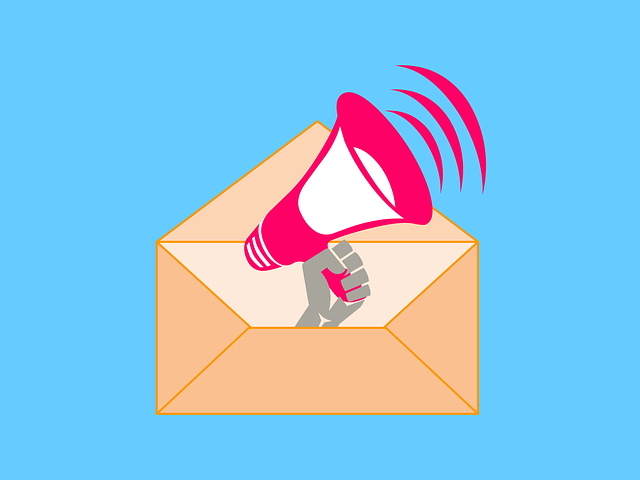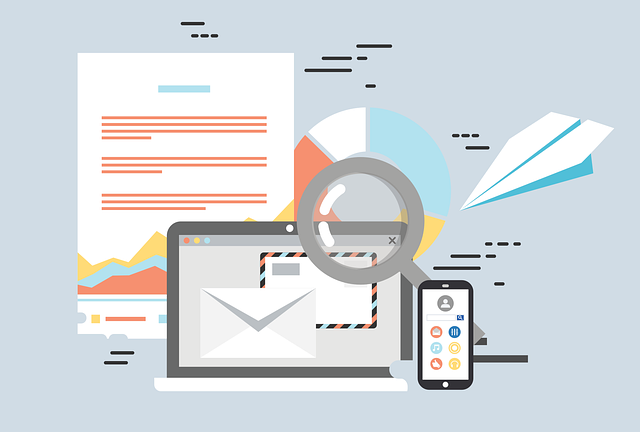Did you know that email marketing has an average ROI of $38 for every $1 spent? In the highly competitive travel and hospitality industry, it is crucial to measure the success of your email campaigns to ensure you are getting the most out of your marketing efforts.
By tracking key metrics, you can gain valuable insights into the effectiveness of your emails and make data-driven decisions to improve your strategies.
Open rates indicate the effectiveness of your subject lines and preview text, while click-through rates measure engagement. Conversion rates help you assess the impact of your emails on booking and purchasing decisions.
Bounce rates and unsubscribe rates can reveal issues with your email list quality and content. Ultimately, calculating your ROI allows you to determine the financial impact of your campaigns.
In this article, we will explore these email marketing metrics and how they can help you measure success in the travel and hospitality industry.
Key Takeaways
- Open rates, click-through rates, conversion rates, bounce rates, and unsubscribe rates are key metrics for measuring the success of email marketing campaigns in the travel and hospitality industry.
- Improving subject lines and preview text can help increase open rates, while optimizing email campaigns, personalizing content, using compelling CTAs, and testing different formats can improve click-through rates.
- Conversion rates measure the number of recipients who complete a desired action after clicking on a link, while bounce rates and unsubscribe rates reveal issues with email list quality and content.
- Analyzing unsubscribe rates and comparing them with industry benchmarks can help identify areas for improvement, and calculating ROI can assess the overall success and profitability of email campaigns.
Open Rates: Measure the effectiveness of your email subject lines and preview text in enticing recipients to open your emails.
Your email open rates are like windows into the minds of your recipients, revealing whether your subject lines and preview text are successfully luring them in. To improve engagement and optimize subject lines, you need to pay close attention to these metrics.
By analyzing open rates, you can determine which subject lines and preview text are most effective in enticing recipients to open your emails. This data-driven approach allows you to make informed decisions and adjust your email marketing strategy accordingly.
Once you have mastered the art of captivating subject lines, you can seamlessly transition into tracking click-through rates. This metric will help you gauge the interest and engagement of your recipients by measuring the percentage of people who click on links within your emails.
Click-Through Rates: Track the percentage of recipients who click on links within your emails, indicating their interest and engagement.
Boost engagement by tracking the percentage of recipients who click on links within emails, indicating their interest and involvement. Click-through rates (CTRs) are an essential metric to measure the effectiveness of your email marketing campaigns in the travel and hospitality industry.
By monitoring CTRs, you can gauge how well your content resonates with your audience and identify areas for improvement. To optimize your CTRs, consider the following:
- Use compelling and clear call-to-action (CTA) buttons that entice recipients to click.
- Personalize your emails to make them more relevant and engaging.
- Test different email formats, layouts, and designs to see what generates the highest CTR.
Tracking engagement through CTRs allows you to refine your email marketing strategy and deliver content that drives action.
Next, let’s explore conversion rates, which measure the number of recipients who complete a desired action after clicking on a link in your email.
Conversion Rates: Measure the number of recipients who complete a desired action, such as booking a hotel or purchasing a travel package, after clicking on a link in your email.
By tracking conversion rates, you can witness the power of your email campaign as recipients eagerly book hotels or purchase travel packages after clicking on a link. This metric measures the number of recipients who complete a desired action, such as booking a hotel or purchasing a travel package, after clicking on a link in your email. It provides valuable insights into the effectiveness of your email marketing efforts and allows you to optimize your campaigns for better results.
To understand the impact of conversion rates, let’s look at a hypothetical example:
| Emails Sent | Clicks | Bookings | Booking Conversion Rate | |
|---|---|---|---|---|
| Email Campaign A | 10,000 | 500 | 50 | 10% |
| Email Campaign B | 10,000 | 600 | 60 | 10% |
| Benchmark Industry Average | – | – | – | 8% |
| Potential Room for Improvement | – | – | – | 2% |
As you can see, both Campaign A and Campaign B have a booking conversion rate of 10%, which is higher than the industry average of 8%. This indicates that these campaigns are performing well in terms of driving bookings. However, there is still room for improvement to reach the potential 12% booking conversion rate.
By analyzing conversion rates, you can identify the strengths and weaknesses of your email campaigns and make data-driven decisions to optimize your marketing strategy. Next, we will discuss bounce rates: monitoring the rate at which your emails are undeliverable, helping you identify issues with your email list quality or deliverability.
Bounce Rates: Monitor the rate at which your emails are undeliverable, helping you identify issues with your email list quality or deliverability.
Monitoring bounce rates allows you to uncover any problems with the deliverability of your emails. This provides valuable insights into the quality of your email list and helps you identify areas for improvement. By keeping a close eye on bounce rates, you can ensure that your messages are reaching the intended recipients and avoid wasting resources on undeliverable emails.
High bounce rates may indicate issues with your email list management or deliverability optimization, such as outdated or invalid email addresses. By addressing these issues promptly, you can improve the effectiveness of your email marketing campaigns and increase your chances of reaching your target audience.
So, it is crucial to regularly monitor and analyze bounce rates to optimize your email deliverability and ensure that your messages are reaching your desired recipients. This will set the stage for the next section on unsubscribe rates, where you can track the number of recipients who choose to unsubscribe from your emails, indicating a lack of interest or dissatisfaction with your content.
Unsubscribe Rates: Track the number of recipients who choose to unsubscribe from your emails, indicating a lack of interest or dissatisfaction with your content.
Maximize the impact of your email campaigns by understanding why recipients unsubscribe, allowing you to tailor your content and keep your audience engaged. To improve your unsubscribe rates in the travel and hospitality industry, analyze the reasons for high unsubscribe rates and implement strategies to improve content relevance and engagement. Consider these key factors:
-
Content Relevance: Ensure that your emails provide valuable and relevant information to your subscribers, such as exclusive offers, travel tips, or destination highlights.
-
Frequency: Find the right balance in your email sending frequency to avoid overwhelming your subscribers with too many emails or being forgotten with too few.
-
Personalization: Use customer data to personalize your emails, addressing recipients by name and providing customized recommendations based on their preferences.
By comparing your unsubscribe rates with industry benchmarks, you can gauge the effectiveness of your email marketing campaigns in the travel and hospitality industry. This analysis will help you identify areas for improvement and optimize your strategies.
Next, we will explore how to calculate the financial impact of your email marketing campaigns through return on investment (ROI).
Return on Investment (ROI): Calculate the financial impact of your email marketing campaigns by comparing the revenue generated against the costs incurred, helping you assess the overall success and profitability of your efforts
To truly gauge the success and profitability of your email campaigns, it’s essential to crunch the numbers and calculate the ROI. This will give you a clear picture of the financial impact. By analyzing the revenue generated against the costs incurred, you can determine the effectiveness of your email marketing efforts in the travel and hospitality industry.
This metric allows you to understand if your campaigns are yielding a positive return on investment or if adjustments are needed to increase profitability. To optimize your ROI, consider implementing email segmentation and A/B testing.
Segmenting your email list based on customer preferences and behavior allows for targeted messaging, increasing the likelihood of conversions. A/B testing different elements of your campaigns, such as subject lines or calls to action, enables you to identify the most effective strategies for driving revenue.
By leveraging these tactics, you can maximize the financial success of your email marketing campaigns.
Frequently Asked Questions
How can I improve my email subject lines and preview text to increase open rates?
To improve your email subject lines and preview text for increased open rates, focus on two key strategies: improving email personalization and analyzing A/B testing results.
First, personalize your subject lines by including the recipient’s name or location. This adds a personal touch and makes the email feel more tailored to the individual. Additionally, tailor your preview text to create intrigue or urgency. This can be done by teasing the content or highlighting a time-sensitive offer.
Second, analyze A/B testing results to understand which subject lines and preview text perform best with your audience. A/B testing involves sending different versions of an email to a small sample of your audience and comparing the open rates. Use the data from these tests to refine your email content and optimize open rates.
By implementing these data-driven tactics, you can improve your email subject lines and preview text to increase open rates and boost engagement.
What strategies can I implement to increase click-through rates in my email campaigns?
To increase click-through rates in your email campaigns, you can implement effective strategies for personalization and A/B testing.
By tailoring your content to individual recipients’ preferences and behavior, you can create a more engaging and relevant experience.
A/B testing allows you to experiment with different elements like subject lines, call-to-action buttons, and visuals to determine what resonates best with your audience.
These data-driven tactics can significantly improve your click-through rates and ultimately drive more conversions.
What are some effective ways to optimize conversion rates in the travel and hospitality industry?
To optimize conversion rates in the travel and hospitality industry, you need to focus on personalization tactics and utilizing social proof. By tailoring your offerings to individual preferences and needs, you can increase engagement and drive conversions.
Additionally, incorporating social proof, such as customer testimonials and reviews, can build trust and confidence in your brand, leading to higher conversion rates. These strategies have been proven to be effective in boosting conversions in the travel and hospitality industry.
How can I reduce bounce rates and improve the deliverability of my emails?
To reduce email bounce rates and enhance email deliverability, focus on improving your email list quality. Regularly clean your list by removing invalid or inactive email addresses. Use double opt-in to ensure subscribers are engaged.
Segment your list and personalize your emails to increase relevancy and engagement. Monitor your sender reputation and avoid spam triggers in your email content. Implement authentication protocols like DKIM and SPF to improve deliverability.
Regularly test and optimize your email campaigns for better results.
What techniques can I use to minimize unsubscribe rates and keep recipients engaged with my email content?
To minimize unsubscribe rates and keep recipients engaged with your email content, focus on email personalization and segmentation techniques. Tailor your emails to individual recipients by using their names and addressing their specific interests and needs.
Segment your email list based on demographics, preferences, or past interactions to send targeted content. This approach has been proven to increase engagement and decrease unsubscribe rates, resulting in a more successful email marketing strategy.
Conclusion
So, now that you understand the key email marketing metrics for the travel and hospitality industry, you might be thinking, ‘But is all this data really necessary? Can’t I just send out emails and hope for the best?’
Well, let me tell you, in today’s competitive landscape, relying on hope alone won’t cut it. By measuring these metrics, you can gain valuable insights into the effectiveness of your campaigns and make data-driven decisions to improve your success.
Don’t let your efforts go to waste – use these metrics to drive engagement, increase conversions, and ultimately boost your bottom line.









